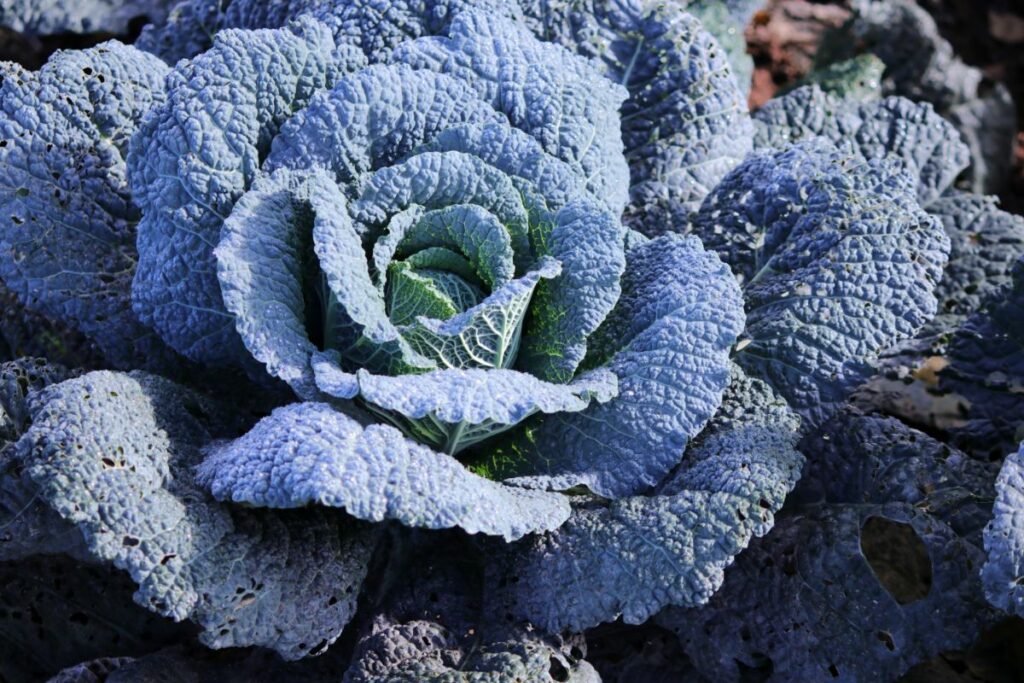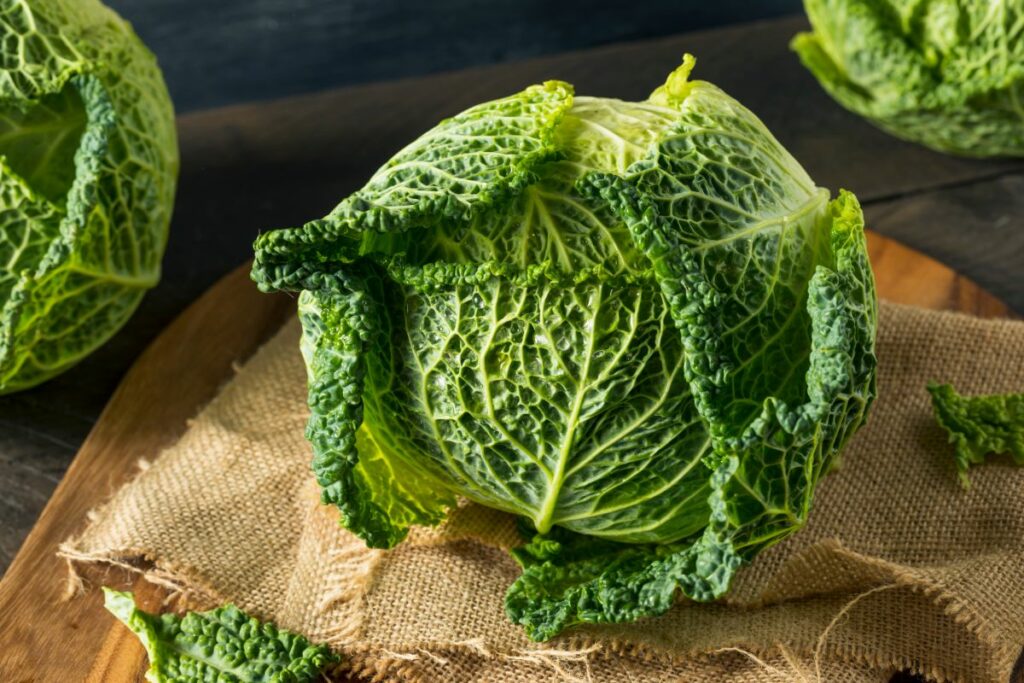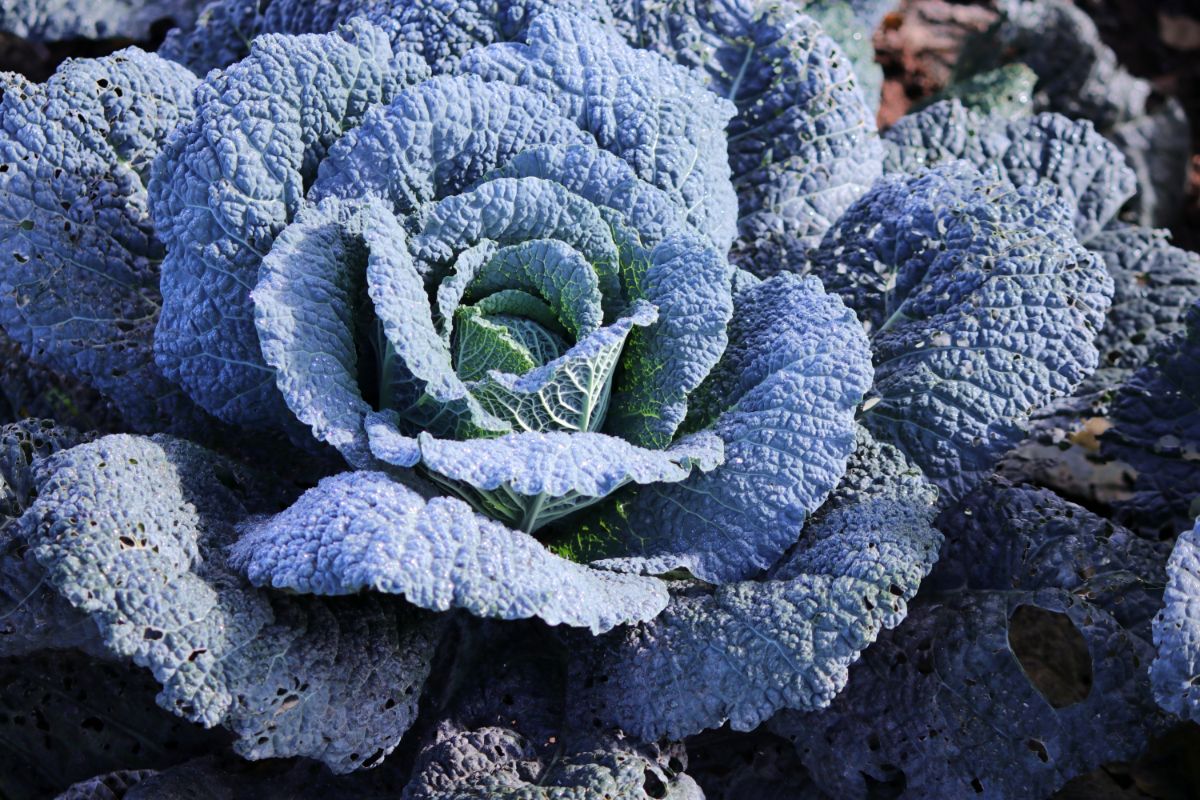Savoy cabbages, notable for their crinkly leaves and rich flavour, offer both a visual and culinary delight.
Growing cabbages can be a fulfilling gardening venture, but knowing how to give them what they need is the difference between a sad crop of savoy and a bountiful harvest.

Keep reading for my top tips on growing the perfect savoy:
Delving Into Savoy Cabbage Varieties
Several savoy cabbage varieties cater to different tastes and climates.
Varieties such as ‘Winter King’, ‘Vertus’, and ‘January King’ each have their unique growth patterns and flavour profiles.
It’s vital to research and select a variety suited to your local conditions and palate.
Preparing The Perfect Spot
Now you have your savoy variety selected, it’s time to prep the location.
Top Tops For Site Selection: Savoy cabbages appreciate sunlight but can also tolerate partial shade. Choose a location with good airflow and where different crops were grown in the previous season to avoid soil-borne diseases.
Soil Conditioning: These cabbages thrive in well-draining soil. If you’re dealing with dense clay, incorporate coarse sand or organic matter. Enrich the soil with compost to boost nutrient content and enhance moisture retention.
The Sowing Process
The good news is, you can start your savoys both indoors and outdoors – here’s how:
Indoor Sowing: For an early start, sow seeds indoors using modular trays, aiding easier transplantation later.
Outdoor Sowing: If sowing directly outdoors, ensure the threat of frost has passed for early crops. For late varieties, sowing during late spring to early summer is advised.
Transplanting With Care
When your seedlings have appeared, it’s time to transplant them:
Seedling Care: Before transplantation, seedlings should have a strong root system and at least two true leaves.
Spacing: Provide each seedling ample room to flourish. Overcrowded plants can lead to disease and yield smaller heads.
TLC For Thriving Cabbages
To grow the best savoy cabbages possible, you need to give them the right care.
Watering Techniques: Deep watering using a soaker hose or drip irrigation ensures roots receive ample moisture, reducing the risk of leaf diseases.
Nutrient Boost: As heavy feeders, savoy cabbages benefit from compost or a balanced, slow-release fertiliser.
Rotation: Practising crop rotation is essential to keep soil-borne diseases in check. Avoid planting cabbages or related crops in the same spot consecutively.
Guarding Against Pests And Diseases
To ensure a good crop of savoys, you have to be vigilant when it comes to pests and diseases. Here are the main things to bear in mind:
Natural Predators: Encourage beneficial insects like ladybirds and lacewings, which naturally control aphids.
Barriers: Floating row covers can deter pests, preventing them from reaching the plants.
Disease Prevention: Clubroot is a common issue with brassicas. Rotate crops and, if needed, adjust soil pH to deter this disease.

Harvesting And Storing Insights
If you’ve nurtured your cabbages well, it will soon be time to harvest.
Harvesting Signs: Mature cabbages should have firm heads. Avoid letting them overgrow to prevent splitting.
Storing: For storage, remove loose leaves and place cabbages in a cool, dry location. For longer preservation, consider blanching and freezing.
Culinary Inspiration
The culinary uses of savoy cabbage are vast. From sautéed dishes, hearty stews, to fermentations like sauerkraut, there’s no end to the delectable creations you can make.
Final Thoughts
Growing savoy cabbages requires patience and care, but with the right techniques, you can expect a generous harvest perfect for a myriad of dishes.
Happy gardening!
Ready for more? Learn how to grow red cabbages here.
- Can You Grow Bell Peppers Indoors? A Guide For New Gardeners - November 14, 2023
- Composting Basics: Can You Compost Mushrooms? - November 6, 2023
- A Gardener’s Guide To Growing Carrots In Raised Beds - November 1, 2023







